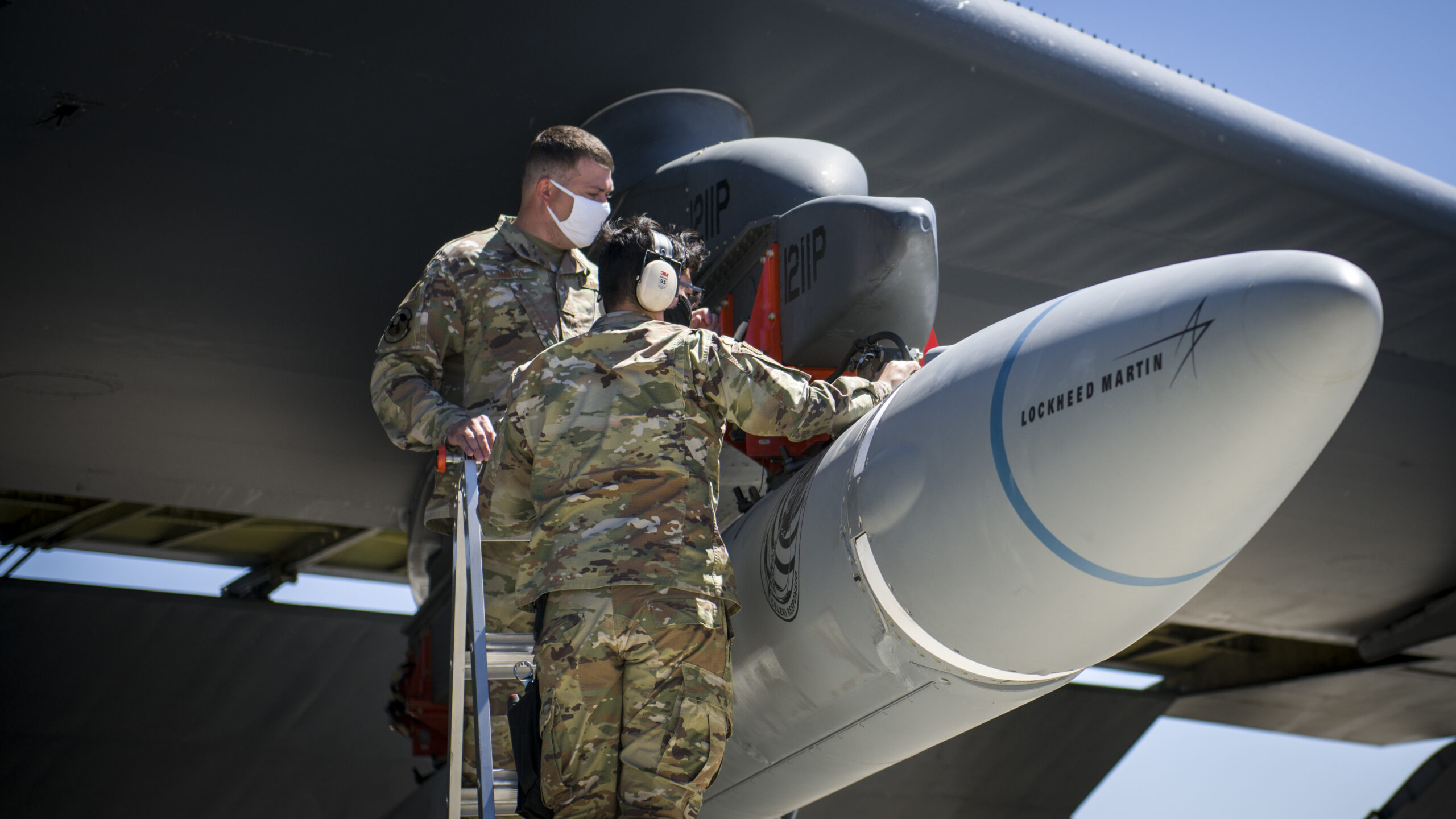
Airmen secure the AGM-183A Air-launched Rapid Response Weapon Instrumented Measurement Vehicle 2 as it is loaded under the wing of a B-52H Stratofortress at Edwards Air Force Base, California, Aug. 6. The ARRW IMV-2 successfully completed a captive carry test off the Southern California coast, Aug. 8. (Air Force photo by Giancarlo Casem)
WASHINGTON — The Air Force has successfully conducted the first all-up round test of the AGM-183A Air-launched Rapid Response Weapon, a milestone that could pave the way for the service to adopt a hypersonic air-launched missile for the very first time.
The test — which was conducted on Dec. 9 off the coast of southern California — marked the first time the Air Force had launched a fully operational version of the missile. According to the service, a B-52 launched the ARRW, which safely separated from the aircraft, “reached hypersonic speeds greater than five times the speed of sound, completed its flight path and detonated in the terminal area,” thus completing its objectives.
The successful all-up-round test — the capstone test event that validates the missile’s performance in its final, fully-assembled form — is a massive milestone for the ARRW program. It could pave the way for ARRW to be put into production by its manufacturer Lockheed Martin as early as fiscal 2024.
“The ARRW team successfully designed and tested an air-launched hypersonic missile in five years,” said Brig. Gen. Jason Bartolomei, Armament Directorate Program Executive Officer. “I am immensely proud of the tenacity and dedication this team has shown to provide a vital capability to our warfighter.”
The latest test puts the missile “on the cusp of an operational capability that can be deployed to the men and women in uniform,” said Jay Pitman, Vice President of Air Dominance and Strike Weapons at Lockheed Martin Missiles and Fire Control.
While the Dec. 9 test lays the groundwork for ARRW to become the first operational hypersonic missile to be bought and fielded by the Air Force, the development effort hasn’t always proceeded smoothly.
After the program was hit by a series of three consecutive launch failures during its booster test phase, Air Force Secretary Frank Kendall raised concerns about whether ARRW would be a wise investment for the Air Force, questioning whether the weapon is optimized for Chinese and Russian targets.
“ARRW still has to prove itself,” Kendall said in March. “So we need to do that, and we also need to take a larger look at what’s the right mix for the future. What are the things that will need investment?”
The Air Force finally scored a first successful booster test launch this May, but even after another test in early July, the service’s top acquisition official indicated that the future of the program is still under consideration.
“We haven’t made the decision on what do we do when the current demonstration program finishes,” Andrew Hunter, the Air Force’s assistant secretary for acquisition, technology and logistics, told reporters July 16 at the Royal International Air Tattoo.
“What we’re looking at is our weapons mix and our munitions mix for our highest priority operational problem sets which are tied to the pacing threat, and that’s what’s really driving decision making,” he said. “You obviously don’t wouldn’t buy something that doesn’t work. But even if it does work, it’s got to be it’s got to be the right contribution to the overall weapons mix.”
The service had originally intended to buy the first 12 AGM-183As in FY22, but Congress cut funding for the program due to setbacks during testing. The Air Force requested $46.6 million for the ARRW program in FY23 to procure the first operational missile, but during the roll out of the budget request, service officials said they would seek to transfer those funds back into research and development.
Taking aim: Army leaders ponder mix of precision munitions vs conventional
Three four-star US Army generals this week weighed in with their opinions about finding the right balance between conventional and high-tech munitions – but the answers aren’t easy.


























